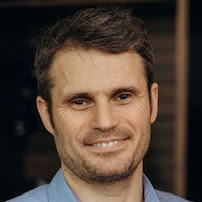Taking Tech Talent Tips from the Timberwolves
By – Joel Crandall, Vice President, Programs, MnTech
Ever worried about losing talent to big employers on the East or West Coasts?
Ever been frustrated by an outdated skills evaluation approach for new hires?
Ever needed to reboot your internal professional development strategy to develop your own team?
Ever wondered how to win your first playoff series since 2004?
If any of these trends feel familiar—you and the Minnesota Timberwolves have a lot in common. I’ve watched Timberwolves news over the last few months with a good deal of curiosity. They’re a franchise that has tried for a long time to rebuild their culture (mediocrity) and image (complacency) to put together a winning product.
My role at MnTech allows me to have conversations with tech leaders across the state. The challenge of inspiring, hiring, developing, and retaining talent is front of mind for many of them. The competitive environment of low to no unemployment in areas of tech is not new. But COVID, college going rates, and coastal talent draw (and coastal pay rates) seem to have accelerated challenges.
Though the verdict on the Timberwolves is still out—I have appreciated their demonstrated drive to go somewhere new. And, their approach illustrates opportunities for tech companies—even if you can’t name a single player on the Wolves roster.
Set a culture focused on talent acquisition and development – The Timberwolves made a huge splash by hiring Tim Connelly away from another team to become their President of Basketball Operations. Connelly has a reputation for drafting and developing talent. Your company gains a competitive advantage when it is led by talent developers. It sends a signal internally that growth and advancement are sacred. It sends the message externally that this is the type of organization you’d like to be hired.
Pay your superstars competitively – The Timberwolves signed a contract extension with three time All Star Karl-Anthony Towns, agreeing to pay him the highest level allowed by the NBA. The move is not without controversy. KAT, as he is informally known, has weaknesses and vulnerabilities, not the least of which is whining about, well, lots of things. However, it would be hard to dispute the value that he brings to the team, especially when he is supported by other players around him. Your company gains credibility when it finds ways to invest in internal stars through development opportunities and competitive pay. If these moves can be publicly celebrated, you can also garner a reputation as a team that builds talent from within.
Put young leaders in the spotlight – The Timberwolves have counterbalanced a controversial star with a fiery, young personality, Anthony Edwards. Edwards takes accountability for himself and is willing to demand it from others. He pushes himself hard on the floor, and brings authenticity and humor off the court. Your company will always have senior leaders with flaws. But betting on younger stars, and sharing spotlight time with them, can help to round out your public image. It sends the message to young, hungry employees that there is room for them to contribute and grow.
Take risks that signal a desire to become great – The Timberwolves made their biggest offseason trade in over a decade last week. They signed an All Star player from an opponent in exchange for several existing players and many future draft picks. Maybe they paid too much. Maybe they picked the wrong player to pursue. But, I appreciate their willingness to signal to their team that they believe that winning big now is possible. Your team should always be thinking about the talent ‘long game’ by hiring and developing individuals that improve your chances for years to come. However, there are unique circumstances that demand you invest big to achieve your teams values and goals.
This is not an endorsement of all the moves the Timberwolves make. They play in an ultra-competitive league with lots of teams fighting for talent. They make decisions at a point in time with tons of missing data. And, they struggle to execute plans even when they are clearly laid out. Likely, those conditions feel familiar, too.





















